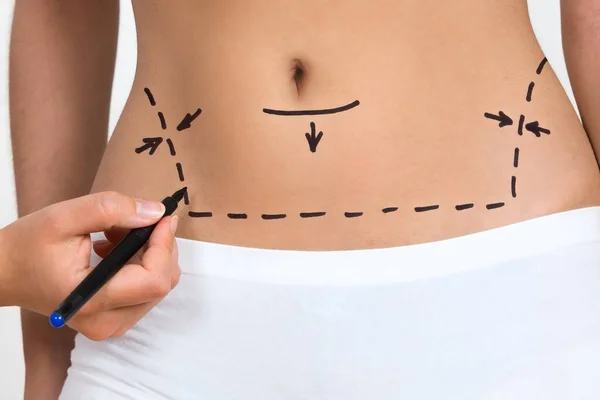In the quest for the sculpted physique that epitomizes fitness and aesthetics, individuals are increasingly turning to innovative cosmetic procedures. One such procedure that has gained prominence is Abdominal Etching.
This nuanced technique goes beyond traditional approaches to body contouring, providing a meticulous and detailed transformation of the abdominal region. Let’s delve into the intricacies of this procedure and unravel everything you need to know.
Understanding Abdominal Etching
Abdominal Etching is a cosmetic surgery procedure designed to enhance the definition of the abdominal muscles, providing a chiseled and toned appearance. It is particularly sought after by individuals who, despite rigorous exercise and a healthy lifestyle, struggle to achieve the desired level of muscle definition in their midsection.

The Surgical Technique
The surgeon employs advanced liposuction techniques during Abdominal Etching to selectively remove excess fat from specific areas of the abdomen. This targeted approach allows for the creation of more pronounced muscle contours, mimicking the appearance of a well-defined six-pack or eight-pack.
The procedure involves making small incisions through which a thin tube, known as a cannula, is inserted. The surgeon then sculpts the abdominal fat deposits with precision, accentuating the natural lines of the underlying muscles. This results in a sculpted and athletic appearance that can be challenging to attain through conventional means.
Ideal Candidates For Abdominal Etching
While Abdominal Etching is a remarkable technique, it is crucial to understand that it is not a substitute for weight loss or a shortcut to fitness. Ideal candidates are individuals who are already in good physical shape, with a low body fat percentage, but struggle to achieve the desired muscle definition.
Key Considerations For Candidates:
- Low Body Fat: Candidates should have a body fat percentage in the range of 10-20%. This ensures that the underlying musculature is visible after the procedure.
- Healthy Lifestyle: Those considering abdominal etching should lead a healthy lifestyle, incorporating regular exercise and a balanced diet.
- Realistic Expectations: It is essential for candidates to have realistic expectations about the outcome of the procedure. While Abdominal Etching can enhance muscle definition, it does not replace the need for a healthy lifestyle.
The Procedure: Step By Step
- Consultation: The journey begins with a thorough consultation with a qualified plastic surgeon. During this consultation, the surgeon evaluates the patient’s medical history, assesses their body composition, and discusses realistic goals and expectations.
- Marking the Muscles: Before the surgery, the surgeon marks the areas of the abdomen where fat will be selectively removed. This step is crucial for achieving symmetry and the desired sculpted appearance.
- Anesthesia: The procedure is typically performed under general anesthesia to ensure the patient’s comfort and safety.
- Liposuction: Small incisions are made, and a cannula is used to suction out excess fat from specific areas, revealing the underlying muscle definition.
- Closing Incisions: Once the desired contours are achieved, the incisions are meticulously closed, and the patient is moved to a recovery area.
Recovery And Postoperative Care
Recovery from Abdominal Etching is generally swift, but patients are advised to follow postoperative care instructions diligently to optimize results and minimize complications.
Key Aspects Of Recovery:
- Compression Garments: Patients are often required to wear compression garments to minimize swelling and support the healing process.
- Activity Restrictions: Strenuous physical activities should be avoided during the initial weeks of recovery to allow the body to heal properly.
- Follow-up Appointments: Regular follow-up appointments with the surgeon are crucial to monitor progress and address any concerns.
Potential Risks And Complications
As with any surgical procedure, Abdominal Etching carries certain risks. It is imperative for individuals considering this procedure to be well-informed about potential complications.
Potential Risks:
- Infection: Though rare, infection is a risk associated with any surgical procedure. Strict adherence to postoperative care guidelines can mitigate this risk.
- Uneven Results: Achieving symmetry in muscle definition is a delicate process, and there is a slight risk of uneven results. This underscores the importance of choosing an experienced and skilled surgeon.
Long-Term Results And Maintenance
The long-term success of Abdominal Etching depends on the individual’s commitment to maintaining a healthy lifestyle. While the procedure sculpts the abdominal muscles, it does not exempt individuals from the need for proper diet and regular exercise.
Tips For Maintaining Results:
- Regular Exercise: Continued engagement in core-strengthening exercises is vital for preserving the sculpted appearance achieved through abdominal etching.
- Balanced Diet: A nutritious and well-balanced diet supports overall health and helps prevent the accumulation of new fat deposits in the treated areas.
What Experts Say
Abdominal etching, also known as six-pack surgery or liposculpture, is a cosmetic procedure that aims to enhance the definition of the abdominal muscles. It involves using liposuction techniques to remove excess fat from specific areas of the abdomen, creating a more sculpted and defined appearance.
Here’s what experts have to say about abdominal etching:
Henry Mentz Everything You Need To Know About Abdominal Etching, a prominent plastic surgeon, highlights the importance of patient selection:
“Abdominal etching is not for everyone. Ideal candidates have a low body fat percentage, good skin elasticity, and realistic expectations about the procedure’s outcome.”
Dr. Salih Onur Basat, a renowned plastic surgeon in Istanbul, emphasizes proper technique:
“The key to successful abdominal etching lies in meticulous technique and an artistic eye. The surgeon must carefully remove fat while preserving the natural contours of the muscles.”
Dr. Fahad Mawlood, a general practitioner with expertise in cosmetic procedures, stresses the importance of post-operative care:
“Proper recovery after abdominal etching is crucial for optimal results. Patients should adhere to their doctor’s instructions regarding compression garments, activity restrictions, and dietary guidelines.”
Experts also provide insights into the risks and benefits of abdominal etching:
Benefits:
- Enhanced definition of abdominal muscles
- Improved self-confidence and body image
- More aesthetically pleasing physique
Risks:
- Infection
- Bleeding
- Fluid accumulation
- Asymmetry
- Temporary numbness or altered sensation
Overall, abdominal etching can be an effective procedure for individuals seeking to enhance their abdominal definition. However, it’s essential to consult with a board-certified plastic surgeon to discuss your candidacy, expectations, and potential risks and benefits.
Conclusion
In conclusion, Abdominal Etching stands as a cutting-edge solution for individuals aspiring to attain a sculpted and defined abdominal appearance.
This procedure, when performed by a skilled professional, can be a transformative experience, providing enhanced confidence and a sense of accomplishment.
As with any cosmetic surgery, thorough research and consultation with a qualified surgeon are essential steps in the journey toward achieving the desired aesthetic goals.
Remember, Abdominal Etching is not a shortcut to fitness but a tool to complement a healthy lifestyle and fitness regimen, helping individuals put the finishing touches on their journey to a more sculpted physique.
Also Read: What To Know Before And After Blepharoplasty (Eyelid) Surgery: Is It Worth It?
Note: This article is written based on scientific evidence found by the 247newsaroundtheworld.com team. Sources are duly referenced with keywords hyperlinked to source websites and are clickable for reference.
Last Updated on November 28, 2023 by 247 News Around The World






